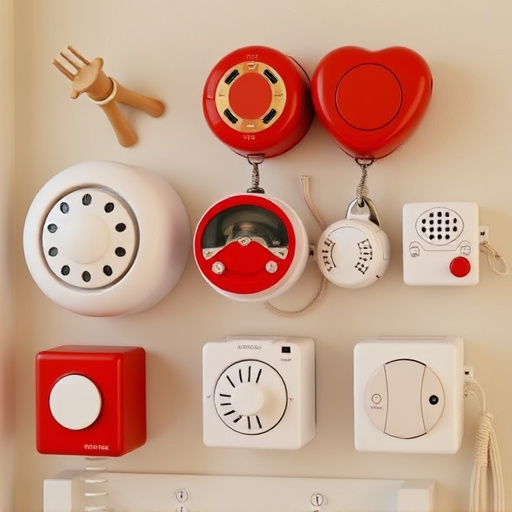Women's personal safety is enhanced by discreet alarms that emit loud sounds upon activation, deterring attackers and alerting help. These portable devices, incorporating GPS tracking and immediate distress notifications, offer a subtle yet powerful solution. By recognizing personal distress signals, women can empower themselves to use these tools effectively, providing peace of mind in dangerous situations.
In today’s world, personal safety is paramount, especially for women facing heightened risk of distress situations. Understanding personal distress signals is key, and so is having a discreet alarm as a lifesaving tool. This article explores how tracking technology can enhance safety through the lens of a discreet personal alarm designed specifically for women. We delve into effective design considerations, user education, and support to empower individuals in emergencies, emphasizing privacy and effectiveness. Discover how these innovations are revolutionizing personal safety.
- Understanding Personal Distress Signals
- Discreet Alarm: A Lifesaving Tool for Women
- Tracking Technology: Safety in Practice
- Designing for Privacy and Effectiveness
- Empowering Users: Education and Support
Understanding Personal Distress Signals
Personal distress signals are subtle yet powerful indicators that someone is in danger or needs immediate assistance. For women, who may face unique risks and challenges, recognizing and responding to these signals can be life-saving. Discreet personal alarms designed specifically for women play a pivotal role in this context, offering a simple yet effective way to alert others when facing distress.
These alarms are typically small, portable devices that can be easily carried or hidden, ensuring their discreteness. When activated, they emit loud sounds or send alerts to pre-selected contacts, drawing attention to the wearer’s location and situation. By learning to identify personal distress signals—be it a sudden change in behavior, persistent anxiety, or unusual physical sensations—women can empower themselves to use these alarms effectively, enhancing their safety and peace of mind in various situations.
Discreet Alarm: A Lifesaving Tool for Women
In today’s digital era, personal safety is a paramount concern, especially for women who often face unique risks in their daily lives. Here, a discreet personal alarm for women emerges as a powerful and lifesaving tool. Unlike traditional alarms that may draw unwanted attention, these compact devices are designed to be subtle yet highly effective, allowing users to signal for help without attracting unnecessary notice.
The discretely styled personal alarms cater to women who want peace of mind while navigating unfamiliar spaces or facing potentially dangerous situations. With a simple press of a button, a high-decibel sound can deter attackers and attract nearby assistance, providing crucial seconds to escape or summon help. This innovative solution ensures that women can confidently assert their safety without compromising their personal space or privacy.
Tracking Technology: Safety in Practice
Tracking technology has revolutionized personal safety, especially for women who often face unique risks in their daily lives. A discreet personal alarm for women is more than just a device; it’s a powerful tool that combines innovative tracking with immediate distress notification. These advanced alarms use GPS and cellular networks to pinpoint the user’s location and send alerts to pre-selected contacts or emergency services in real time.
The implementation of this technology ensures that help can arrive swiftly, especially in situations where a woman feels threatened or is unable to communicate. Discreet in design, these alarms allow users to carry them without drawing unnecessary attention, providing peace of mind and an extra layer of protection. This modern approach to safety empowers individuals while offering a hands-free solution for emergencies.
Designing for Privacy and Effectiveness
When designing a discreet personal alarm for women, striking a balance between privacy and effectiveness is paramount. The device should be small, easily portable, and unassuming to ensure it remains hidden from prying eyes during times of distress. This subtlety is especially crucial in public spaces where drawing attention might escalate an already dangerous situation.
Effectiveness, however, cannot be compromised. The alarm must emit a loud, startling sound to startle potential assailants and alert nearby bystanders. Advanced tracking capabilities, such as GPS and real-time location sharing with trusted contacts, can provide additional security, ensuring help arrives promptly. All these features should be seamlessly integrated without compromising user privacy, allowing women to feel empowered while maintaining their peace of mind.
Empowering Users: Education and Support
Educating users about personal distress signals is a powerful tool in empowering them to take control of their safety. Many women carry discreet personal alarms as a means of protection, but proper knowledge about when and how to use them can make all the difference. By teaching individuals to recognize and respond to subtle signs of danger, they become more attuned to their instincts and are better equipped to react quickly.
Support systems play a crucial role in this process. Encouraging open conversations about personal safety and providing accessible resources for self-defense training can help users build confidence. This, in turn, enables them to activate their discreet personal alarm for women effectively during emergencies, ensuring they have a means of protection that is both subtle and powerful.
Personal distress signals, especially discreet alarms designed for women’s safety, have evolved into powerful tools leveraging tracking technology. By understanding these signals and incorporating them with education and supportive systems, we can create an environment where every individual feels empowered to protect themselves. A discreet personal alarm for women serves as a testament to our commitment to fostering safer communities, ensuring that help is never far away in times of need.
